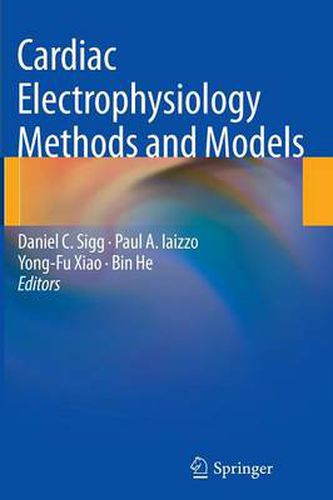Readings Newsletter
Become a Readings Member to make your shopping experience even easier.
Sign in or sign up for free!
You’re not far away from qualifying for FREE standard shipping within Australia
You’ve qualified for FREE standard shipping within Australia
The cart is loading…






This title is printed to order. This book may have been self-published. If so, we cannot guarantee the quality of the content. In the main most books will have gone through the editing process however some may not. We therefore suggest that you be aware of this before ordering this book. If in doubt check either the author or publisher’s details as we are unable to accept any returns unless they are faulty. Please contact us if you have any questions.
Cardiovascular disease is the major cause of mortality and morbidity in the Western Hemisphere. While significant progress has been made in treating a major sub-category of cardiac disease, arrhythmias, significant unmet needs remain. In particular, every day, thousands of patients die because of arrhythmias in the US alone, and atrial fibrillation is the most common arrhythmia affecting millions of patients in the US alone at a given time. Therefore, there is a public need to continue to develop new and better therapies for arrhythmias. Accordingly, an ever increasing number of biomedical, pharmaceutical, and medical personnel is interested in studying various aspects of arrhythmias at a basic, translational, and applied level, both in industry (ie Biotech, Pharmaceutical and device), and in academia. Not only has our overall understanding of molecular bases of disease dramatically increased, but so has the number of available and emerging molecular, pharmacological or device treatment based therapies. This practical, state-of-the art handbook will summarize and review key research methods and protocols, their advantages and pitfalls, with a focus on practical implementation, and collaborative cross-functional research. The volume will include visual and easy-to-use graphics, bulleted summaries, boxed summary paragraphs, links to reference websites, equipment manufacturers where appropriate, photographs of typical experimental setups and so forth, to keep this book very focused on practical methods and implementation, and yet, provide enough theory that the principles are clearly understood and can be easily applied.
$9.00 standard shipping within Australia
FREE standard shipping within Australia for orders over $100.00
Express & International shipping calculated at checkout
This title is printed to order. This book may have been self-published. If so, we cannot guarantee the quality of the content. In the main most books will have gone through the editing process however some may not. We therefore suggest that you be aware of this before ordering this book. If in doubt check either the author or publisher’s details as we are unable to accept any returns unless they are faulty. Please contact us if you have any questions.
Cardiovascular disease is the major cause of mortality and morbidity in the Western Hemisphere. While significant progress has been made in treating a major sub-category of cardiac disease, arrhythmias, significant unmet needs remain. In particular, every day, thousands of patients die because of arrhythmias in the US alone, and atrial fibrillation is the most common arrhythmia affecting millions of patients in the US alone at a given time. Therefore, there is a public need to continue to develop new and better therapies for arrhythmias. Accordingly, an ever increasing number of biomedical, pharmaceutical, and medical personnel is interested in studying various aspects of arrhythmias at a basic, translational, and applied level, both in industry (ie Biotech, Pharmaceutical and device), and in academia. Not only has our overall understanding of molecular bases of disease dramatically increased, but so has the number of available and emerging molecular, pharmacological or device treatment based therapies. This practical, state-of-the art handbook will summarize and review key research methods and protocols, their advantages and pitfalls, with a focus on practical implementation, and collaborative cross-functional research. The volume will include visual and easy-to-use graphics, bulleted summaries, boxed summary paragraphs, links to reference websites, equipment manufacturers where appropriate, photographs of typical experimental setups and so forth, to keep this book very focused on practical methods and implementation, and yet, provide enough theory that the principles are clearly understood and can be easily applied.